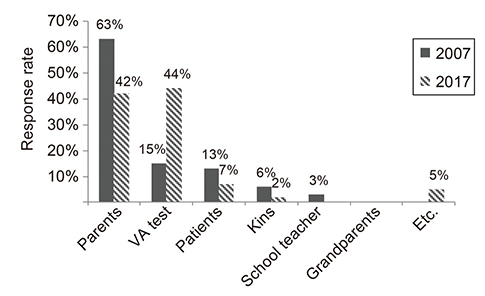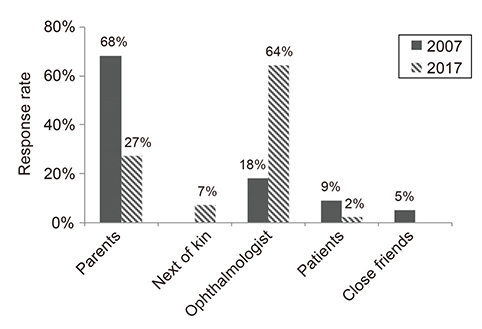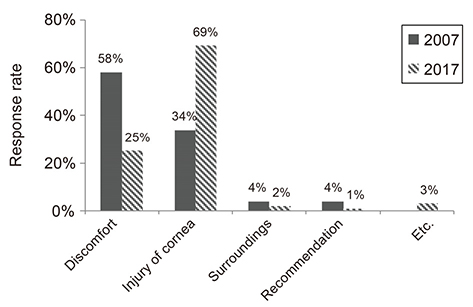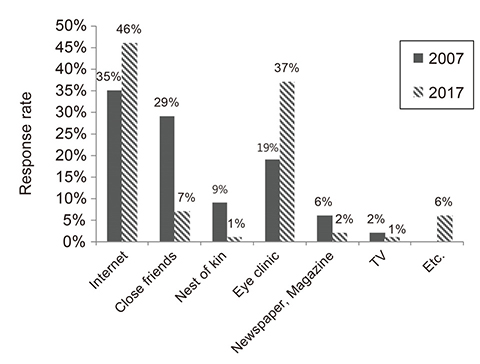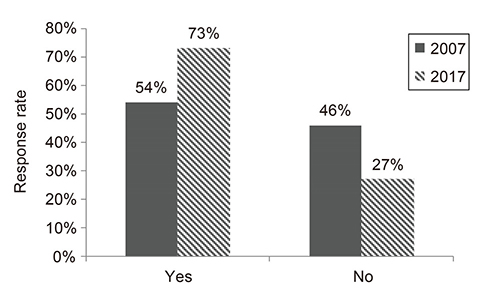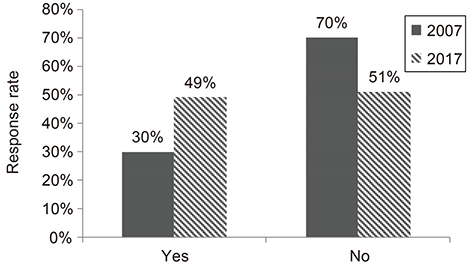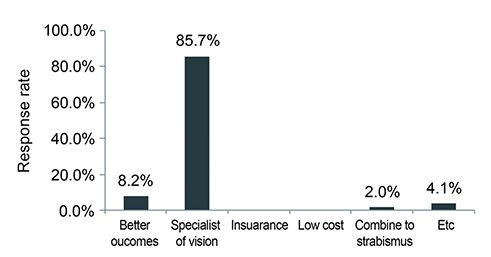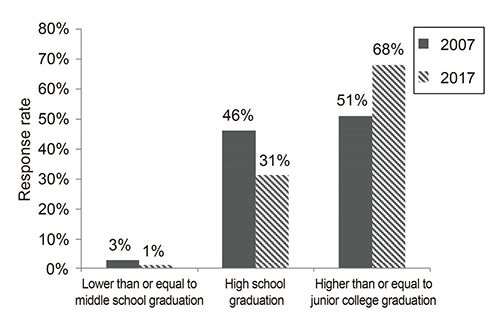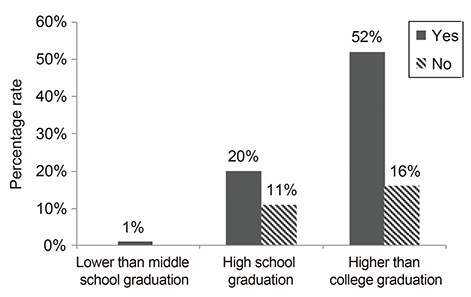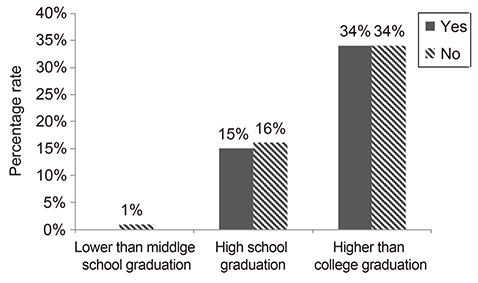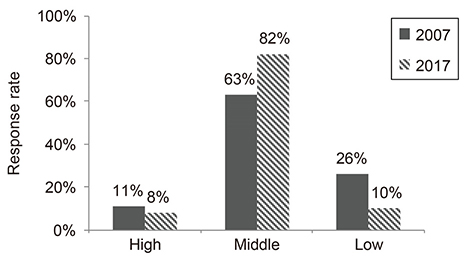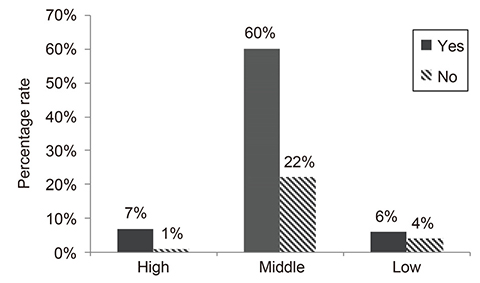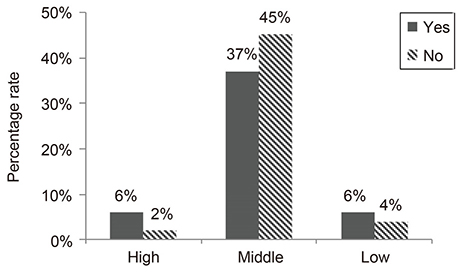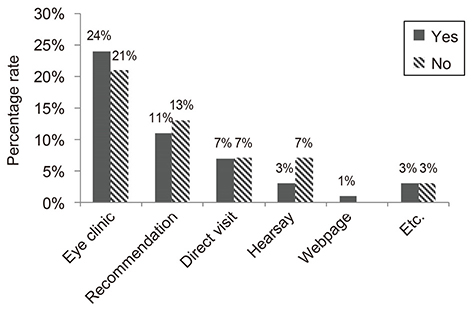J Korean Ophthalmol Soc.
2018 Aug;59(8):703-710. 10.3341/jkos.2018.59.8.703.
Guardians' Perceptions of Pediatric Oculoplasty: Comparative Analysis in 2007 and 2017
- Affiliations
-
- 1Department of Ophthalmology, Yeungnam University College of Medicine, Daegu, Korea. sonjh@ynu.ac.kr
- 2Cheil Eye Hospital, Daegu, Korea.
- KMID: 2418495
- DOI: http://doi.org/10.3341/jkos.2018.59.8.703
Abstract
- PURPOSE
With regard to the process by which the guardians of pediatric oculoplastic patients choose medical care, this study assessed whether their perceptions changed after the department name was changed to oculoplasty. The study involved a comparative analysis of changes in the perceptions between a 10-year period from 2007-2017, to assess whether the name change led to better medical service.
METHODS
Questionnaires, which were the same as those distributed in 2007, were distributed to the guardians of pediatric oculoplastic patients who were hospitalized for surgery for epiblepharon and ptosis. The results from 100 guardians who completed the survey were compared and analyzed with those collected in 2007.
RESULTS
The average age of respondents was 38.1 years, and most respondents were mothers. Most had become aware of the primary symptoms after medical examinations of infants and school eyesight tests. The ophthalmologist had the most direct effect on the decision for oculoplastic surgery. With regard to economic status, most respondents were middle-class. Most had a college degree or higher, which was significantly increased when compared with the educational levels in 2007.
CONCLUSIONS
Overall, guardians' perceptions had improved due to continuous education about oculoplasty, including notification of the name change to the Department of Oculoplasty, but it is necessary to continue efforts, such as providing professional information and medical consultations, to encourage patients to make the right decisions when selecting medical care.
Figure
Reference
-
1. Gedde SJ, Budenz DL, Haft P, et al. Factors influencing career choices among graduating ophthalmology residents. Ophthalmology. 2005; 112:1247–1254.
Article2. Hwang BS, Son JH. A Survey on the perceptions of guardians of pediatric oculoplastic patients. J Korean Ophthalmol Soc. 2007; 48:1023–1027.
Article3. Lee SH. A study of hospital choice on the basis of consumption values theory. Korean J Prev Med. 1997; 30:413–427.4. National Health Insurance Service. 2016 National Health Screening Statistical Year Book. 1st ed. Vol. 1. Wonju: National Health Insurance Service;2017. p. 510.5. Montemurro P, Cheema M, Hedén P. Patients' and surgeons' perceptions of social media's role in the decision making for primary aesthetic breast augmentation. Aesthet Surg J. 2018; 02. 09. DOI: 10.1093/asj/sjy021. [Epub ahead of print].
Article
- Full Text Links
- Actions
-
Cited
- CITED
-
- Close
- Share
- Similar articles
-
- A Survey on the Perceptions of Guardians of Pediatric Oculoplastic Patients
- Survey on the awareness of guardians and dental workers regarding the application of behavioral guidance techniques during dental treatment for pediatric patients
- Isolated Unilateral Tessier Cleft 10 with Anterior Staphyloma
- Educational Needs Associated with the Level of Complication and Comparative Risk Perceptions in People with Type 2 Diabetes
- The perceptions and performance of family-centered care among pediatric nurses at a children's hospital in South Korea: a descriptive study

